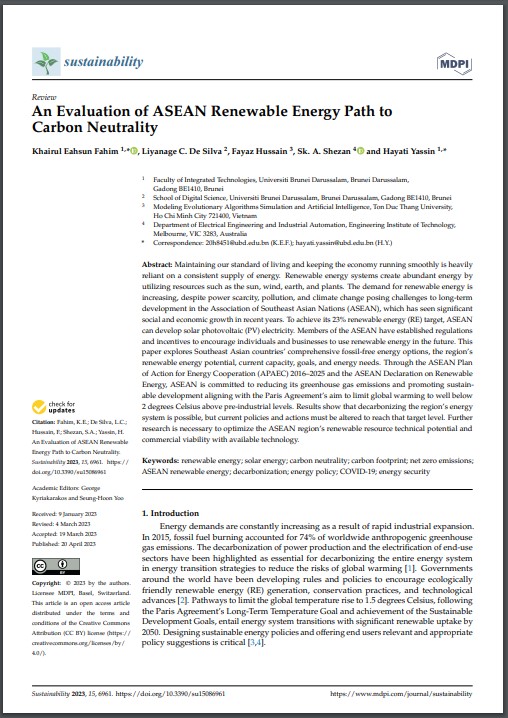
Keyword(s)
Author(s)
a) Khairul Eahsun Fahim, b) Liyanage C. De Silva, c) Fayaz Hussain, d) Sk. A. Shezan, a) Hayati Yassin
Country(ies)
Publisher
Published Date
Access
DOI
Maintaining our standard of living and keeping the economy running smoothly is heavily reliant on a consistent supply of energy. Renewable energy systems create abundant energy by utilizing resources such as the sun, wind, earth, and plants. The demand for renewable energy is increasing, despite power scarcity, pollution, and climate change posing challenges to long-term development in the Association of Southeast Asian Nations (ASEAN), which has seen significant social and economic growth in recent years. To achieve its 23% renewable energy (RE) target, ASEAN can develop solar photovoltaic (PV) electricity. Members of the ASEAN have established regulations and incentives to encourage individuals and businesses to use renewable energy in the future. This paper explores Southeast Asian countries’ comprehensive fossil-free energy options, the region’s renewable energy potential, current capacity, goals, and energy needs. Through the ASEAN Plan of Action for Energy Cooperation (APAEC) 2016–2025 and the ASEAN Declaration on Renewable Energy, ASEAN is committed to reducing its greenhouse gas emissions and promoting sustainable development aligning with the Paris Agreement’s aim to limit global warming to well below 2 degrees Celsius above pre-industrial levels. Results show that decarbonizing the region’s energy system is possible, but current policies and actions must be altered to reach that target level. Further research is necessary to optimize the ASEAN region’s renewable resource technical potential and commercial viability with available technology.